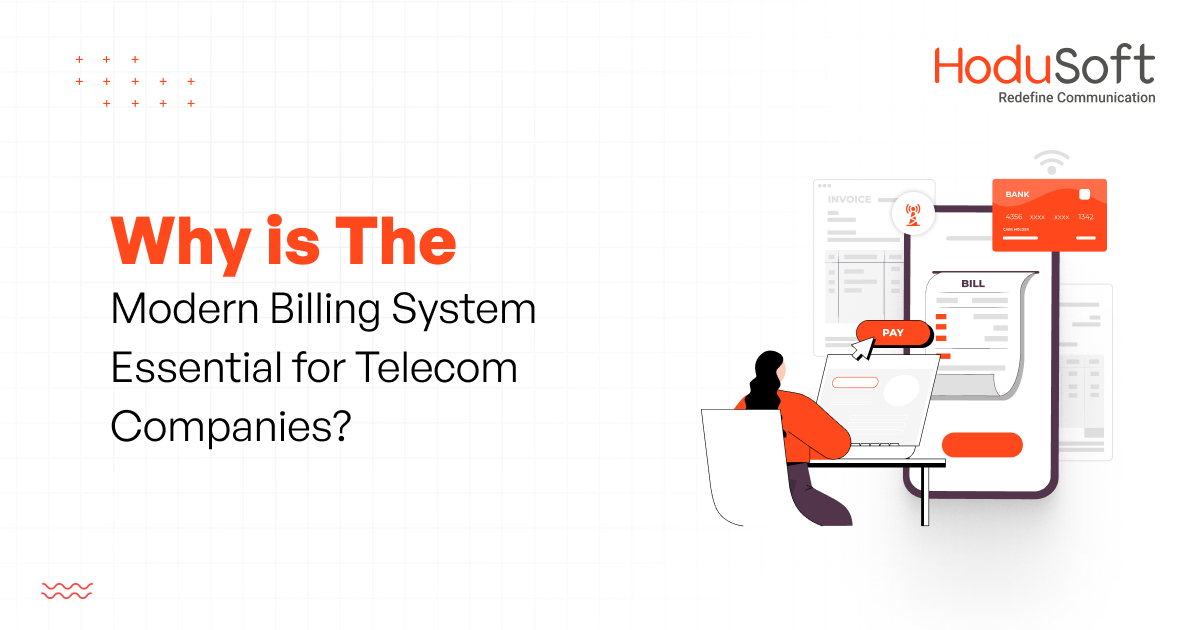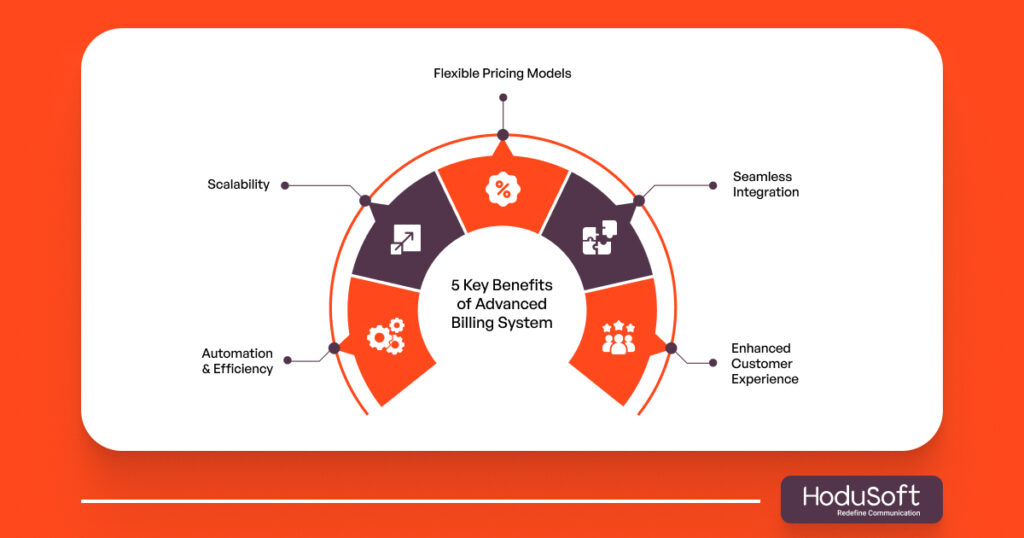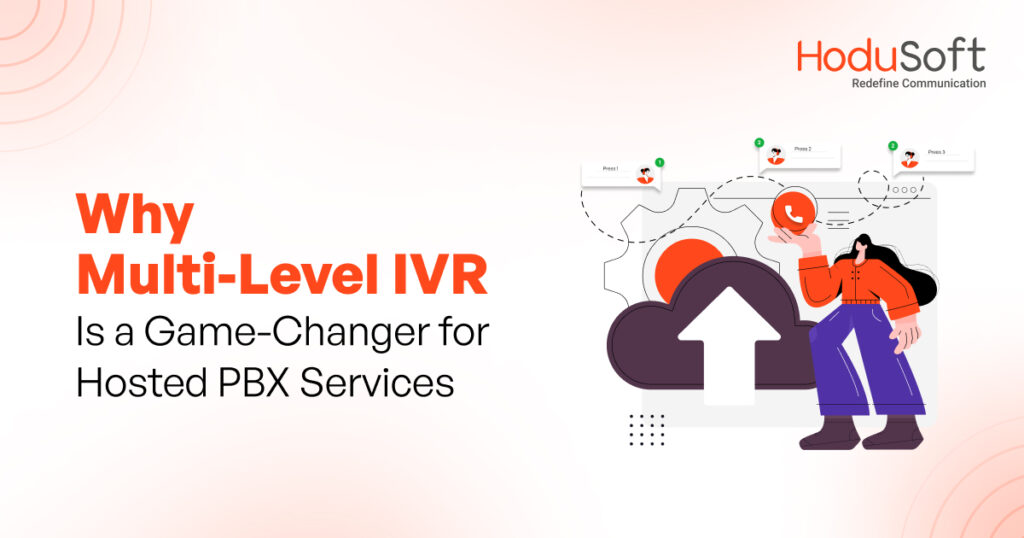Why is the Modern Billing System Essential for Telecom Companies
Would you be surprised to know that billing errors are often a significant source of lost revenue and compliance issues for telecom companies and several other professional service providers?
As per a Gartner study, 85 percent of telecom invoices contain errors! That’s not all. Telecom companies face many other billing issues. To give an example, nearly 60 percent of a survey‘s respondents are unhappy with their telecom bills. To paraphrase one of the most popular lines from author John Grisham’s bestselling novel ‘The Firm’—Billing is the lifeblood of every firm. Everything revolves around it.
However, issues related to billing are one of the biggest challenges in the telecom sector. That’s why it’s extremely critical for telecom companies as well as Internet Service Providers (ISPs), Internet Telephony Service Providers (ITSPs), Cloud Service Providers (CSPs), and various other professional service providers to streamline their billing processes.
At HoduSoft, we helped many telecom providers and professional service providers in streamlining their billing processes. We have equipped our HoduPBX software with a sophisticated billing module that enables telecom companies and professional service providers to simplify the way they send bills and invoices to their clients.
In this blog post, we have discussed how telecom businesses and professional service providers can streamline their billing processes.
Common Billing Issues Telecom Companies Face

Telecom companies and professional service providers face some unique challenges as far as billing is concerned. Here are the challenges they face.
1. Billing Errors
Billing errors can include charging the wrong amount due to incorrect plan configurations, duplicate charges, incorrect discounts or promotional offers. As discussed in the introduction, these are quite frequent and they account for huge lost revenue and compliance issues.
2. Lack of Transparency
The complex bill structures in outdated billing systems can confuse customers. It can make it extremely difficult for customers to know their individual usage patterns and how much they should actually be paying for using the provider’s service offerings. The lack of transparency has a damaging impact on customer satisfaction, customer loyalty, and customer experience.
3. Delayed Billing
It’s not uncommon for legacy billing systems to delay processing, which results in late generation of invoices. Many times, telecom companies experience integration issues with third-party billing platforms. That delays billing and sometimes it can irritate clients.
4. Lack of Adequate Payment Options
When it comes to payment options, lack of flexibility is one of the major challenges many telecom providers face. If outdated billing systems don’t provide the right payment options to customers, then it is pointless. A survey found three out of every five respondents said that they are appalled by the lack of flexibility on payment options.
5. Payment Processing Problems
Even if some telecom companies manage to provide just the adequate payment options, they still face payment gateway integration issues. Failed auto-debits or credit card rejections are the norms rather than exceptions. Customer accounts experience delays in sending the payments and getting the receipts.
6. Inconsistent Tariff Application
Telecom companies that use outdated billing systems face the problem of calculating wrong and outdated tariffs. They can also experience inconsistencies in international calling and roaming charges.
7. Tax and Compliance Issues
When it comes to calculating tax and complying with regulations, legacy billing systems aren’t adept at that. For different countries, tax calculations have to be different. Outdated billing systems aren’t equipped to do that. They also fail to comply with regulatory changes in telecom taxation and surcharges.
Limitations of Legacy Systems
Now that we have discussed the challenges faced by telecom service providers that use legacy communication systems, let’s explore the limitations of the systems. In the telecom industry, efficient billing is a critical strategic asset. Yet legacy systems present several challenges that impact customer satisfaction, revenue streams, and service delivery.
1. Inability to Handle Complex Pricing Models
One of the biggest limitations of legacy systems is that they struggle to handle dynamic, usage-based, and hybrid pricing models. As telecom companies introduce new services with flexible billing structures, outdated systems fail to support these changes. This not only causes billing errors but also results in customer dissatisfaction and revenue losses.
2. Lack of Scalability
When it comes to scalability, legacy systems fare poorly. They cannot efficiently support business expansion, new services, or increased customer demand. As telecom providers grow, outdated systems create bottlenecks, limiting their ability to scale operations, integrate data-driven tools, and enhance service offerings.
3. Limited Revenue Opportunities
Telecom companies that use legacy billing systems lack the flexibility to support new revenue streams. Revenue loss can occur due to billing inaccuracies and reliance on manual intervention. This causes problems for telecom companies to adapt to evolving business models and maximize revenue opportunities.
4. Inefficient Network and Service Management
Effective network management requires real-time data insights, but legacy billing systems operate in silos, limiting access to critical data analytics. This inefficiency leads to higher costs and reduced operational efficiency, affecting both service quality and profitability.
5. Lack of AI and Automation for Billing Optimization
With the rise of AI and data analytics, modern telecom providers leverage generative AI and automation to enhance billing accuracy and reduce manual errors. However, legacy systems rely on manual processes, making it difficult to implement digital transformation strategies that improve efficiency and reduce churn.
6. Struggles to Meet Evolving Customer Expectations
The telecommunications industry is evolving rapidly, with increasing demand for on-demand access and personalized billing solutions. Outdated billing systems cannot adapt to individual usage patterns.
7. Competitive Disadvantage in the Digital Age
To remain competitive, communication service providers must transition to cloud-based, AI-driven solutions that provide real-time data analytics and support new services. Data silos within legacy systems prevent telecom companies from harnessing the full potential of data-driven decision-making.
Key Benefits of Advanced Billing System
Adopting an advanced billing system is essential for telecom providers to remain competitive and enhance customer satisfaction. Unlike legacy billing systems, modern solutions leverage AI and data analytics, automation, and digital transformation to optimize revenue management, service delivery, and customer experience. Here are the key benefits:
1. Automation and Efficiency
Contemporary billing systems are replete with automated features due to which they can easily:
- Reduce manual processes
- Minimize billing errors
- Streamline revenue management
- Enhance operational efficiency
By eliminating delays, disputes, inefficiencies, and errors, these systems foster smoother customer interactions and support better customer relationship management.
2. Scalability
As telecom companies scale operations and diversify service offerings, a flexible and scalable billing platform becomes critical. The billing system should be able to:
- Handle growing customer volumes and transaction loads
- Support rapid rollout of new services
- Facilitate expansion into new revenue streams
- Enable on-demand access and resource optimization
Scalability ensures telecom providers can respond quickly to shifting market demands and evolving customer needs without overhauling their core systems.
3. Flexible Pricing Models
One of the standout features of modern billing systems is their ability to accommodate complex pricing structures that meet evolving customer expectations. The billing feature of the communication system should be able to:
- Provide subscription-based, usage-based, hybrid, and tiered pricing
- Enable customized billing options
- Offer dynamic bundling and promotional campaigns
These capabilities empower telcos to experiment with new opportunities and remain agile in competitive markets.
4. Seamless Integration
Advanced billing systems integrate effortlessly with various enterprise tools, eliminating data silos and fostering data-driven decisions. The system should:
- Connect with CRM, ERP, payment gateways, and other essential platforms
- Enhance network management via integration with AI-powered analytics tools
- Provide real-time visibility
- Improve performance metrics, usage patterns, and revenue opportunities
This holistic view improves both internal operations and external customer experience.
5. Enhanced Customer Experience
Customer-centric features are at the heart of advanced billing systems, helping telecom providers improve satisfaction and customer loyalty. The feature must:
- Offer intuitive self-service portals for better engagement and transparency
- Deliver real-time invoicing, multi-currency support, and flexible payment methods
- Enable proactive communication to anticipate customer needs and reduce friction
A superior billing experience contributes directly to higher retention, improved trust, and long-term customer loyalty.
Choosing the Right Telecom Billing Solution
In today’s highly competitive telecommunications industry, choosing the right billing solution is a mission-critical decision for telecom companies, communication service providers, and enterprises alike. The ideal system goes beyond generating invoices—it becomes a strategic asset that supports digital transformation, unlocks new revenue streams, enhances customer satisfaction, and improves operational efficiency.
Here are the key factors to consider when selecting a modern telecom billing solution that aligns with the goals of revenue growth, cost reduction, and delivering exceptional customer experiences.
1. Cloud-Based vs. On-Premise Deployment
Modern billing systems come with two primary deployment options: cloud-based or on-premise.
Cloud-based billing systems offer scalability, lower operational costs, on-demand access, and seamless updates. They eliminate the burden of maintaining physical infrastructure and enable faster deployment of new services.
On-premise billing solutions give more control over infrastructure and data security but often struggle to keep up with digital transformation goals and changing customer needs.
Cloud-based platforms are particularly advantageous for telecom providers aiming to adapt quickly to evolving markets and manage dynamic service offerings.
2. Seamless Integration with Business Systems
A billing solution should integrate effortlessly with essential business platforms such as CRM, ERP, network management systems, and payment gateways.
Integration eliminates data silos and ensures consistent, real-time data insights across departments. It also improves customer relationship management by centralizing customer data across touchpoints, enabling automation across sales, billing, and support systems. Integrated billing helps monetize individual usage patterns and optimize service delivery, allowing companies to personalize offerings and boost revenue streams.
3. Compliance, Security, and Audit Readiness
In a data-intensive industry, your billing system must comply with regional and international regulations.
Ensure GDPR, PCI-DSS, and telecom-specific compliance standards. Maintain secure access controls, encryption, and audit trails. Provide transparent records for internal reviews and regulatory audits.
Security is essential not just for compliance, but also for maintaining customer trust.
4. Proven Track Record and Vendor Support
Before committing, evaluate the vendor’s track record in the telecom industry.
Does the solution have a proven track record with similar-sized telecom companies? Is there 24/7 support, training, and documentation available? Are there flexible upgrade paths and scalable licensing options?
The right vendor will become a long-term partner in your growth, innovation, and customer success journey.
Taking Everything Into Consideration,
The telecommunications industry has always played a central role in connecting people and businesses, but recent years have seen an acceleration in demand for new services, on demand access, and tailored customer experiences. This transformation is driven by rapid technological innovation, changing customer expectations, and intense market competition.
The telecom landscape is undergoing a seismic shift. To remain competitive, companies must rethink how they operate, engage with customers, and generate revenue. At the center of this transformation lies the billing system—no longer a passive ledger, but an active, intelligent, and strategic part of the business.
At HoduSoft, we have helped many telecom companies streamline their billing processes, enhance customer experience, and unlock new revenue opportunities through our advanced billing solutions. Our systems are designed to meet the evolving needs of the telecommunications industry, offering seamless integration, automation, scalability, and real-time analytics.
Whether you’re aiming to improve operational efficiency, reduce churn, or deliver personalized services, our telecom billing software empowers you to stay competitive in a rapidly changing digital landscape. Partner with HoduSoft to transform your billing into a strategic advantage.





